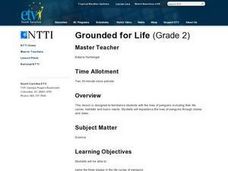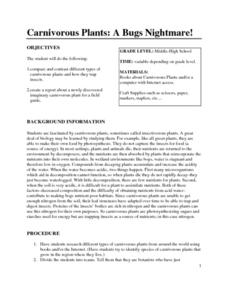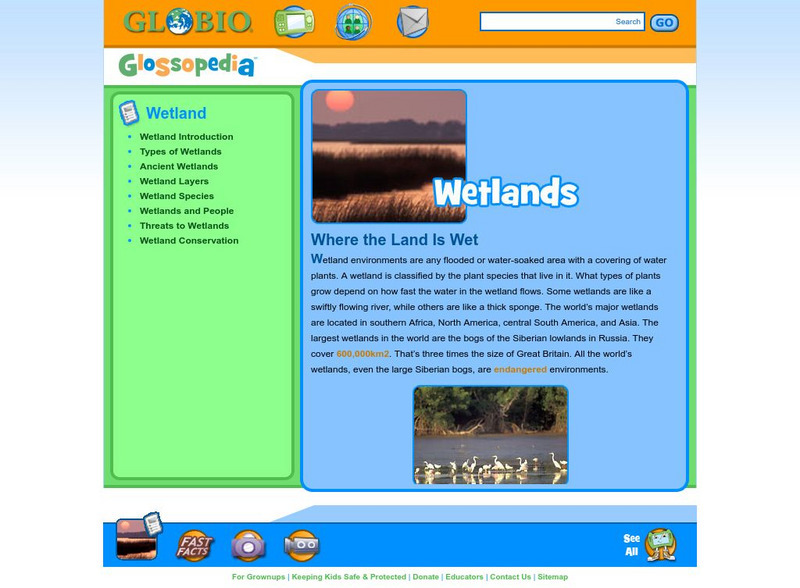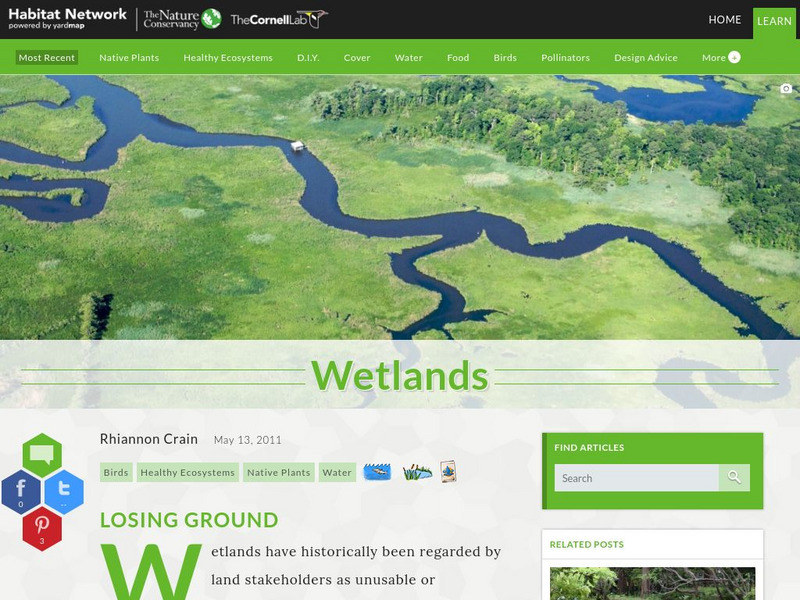Curated OER
Grounded for Life
Second graders become familiar with the lives of penguins including their life cycles, habitats and basic needs. Students will experience the lives of penguins through stories and video.
Curated OER
Hide & Seek Butterflies
Students examine a variety of butterflies and discuss how they believe they get their color variations. In groups, they brainstorm the advantages and disadvantages of their color schemes. To end the lesson, they watch butterflies in...
Curated OER
Understanding Estuaries
Students work together to develop their own estuarine ecosystem in an aquarium. They observe the aquarium daily and record them in a notebook. They discuss the different interactions they see with the class.
Curated OER
Making a Food Web and Learning About Ecosystems
Third graders examine the difference between a food web and food chain. They also examine the importance of the sun in a food web and food chain. Students understand what happens when you remove parts of the chain.
Curated OER
Meadow Study
Middle schoolers examine insects they collect in a sweep nets. They identify as many of the insects as they can.
Curated OER
Seashore Limitations
Students demonstrate the movements and behaviors of creatures from different parts of the ocean.
Curated OER
Saving Habitat
Learners pick an animal native to Maryland and research how populations of that animal might be affected by land use changes over the past thirty years. They predict population trends for the next thirty years.
Curated OER
Carnivorous Plants: A Bugs Nightmare!
Students research carnivorous plants and how they trap insects. They role play as botanists to write a research field guide about a newly discovered imaginary carnivorous plant.
Curated OER
Seeing a World of Difference
Students read through the lyrics and listen to a song about biodiversity. Using pictures they draw, they interpret the song according to their prior knowledge. They identify the threats to different regions around the world and create...
Curated OER
Environment: Methane Sources
Young scholars discover how human activity is increasing the release of methane gas into the atmosphere. Woring in groups, they visit the Eduzone Website and complete worksheets. Students identify the natural and human causes of methane...
Curated OER
Brine Shrimp 1: Hatching Brine Shrimp
Pupils review their prior knowledge on brine shrimp. In groups, they raise a group of brine shrimp and design an artificial environment in which they can live. They change the conditions of the environment to see how the shrimp react...
Curated OER
Birds of Wisconsin
First graders explore the job done by ornithologists. They role play identifying the characteristics that make a bird a bird. They discuss what makes each bird species unique. Students are introduced to Wisconsin's most common and rare...
Curated OER
Introduction to Simulation Project
Young scholars create a simulated self-sustaining ecosystem. In this biology lesson, students examine the different food chain and ecosystems in their model. They recommend some improvements and changes to an existing ecosystem.
Environmental Education for Kids
Eek!: Habitats: Wetlands
Wetland ecosystems are extremely valuable to wildlife, supporting a greater number of animals than any other type of habitat. Wetlands also absorb flood waters; filter chemicals, sediments, and other impurities out of drinking water;...
The Wild Classroom
The Wild Classroom: Biomes of the World: Wetlands Biome
Learn about wetlands ecosystems. Find out about plants, animals, adaptations, and conservation efforts.
Globio
Glossopedia: Wetland
Wetlands are an integral piece of Earth's ecology. Wetland structure is described as well as their role in the health of plants and animals. Issues concerning destruction and preservation efforts also discussed.
US Fish and Wildlife Service
U.s. Fish and Wildlife Service: Wetlands, Marshes, Tracks in the Mud
This resource presents information about wetland ecosystems and the importance of habitat conservation in this resource and then try an interactive activity to identify tracks of wetland animals.
Utah Education Network
Uen: Wonderful Wetlands
Students will observe wetlands to see its important value to plants and animals.
Utah Education Network
Uen: Trb 4:5 Investigation 1 Wetlands, Forests & Deserts
Learn about surface terrain and how plants and animals are affected by the temperatures and precipitation.
A-Z Animals
A Z Animals: Reference: Habitats: Swamps and Wetlands
Learn about the plants, animals, and other characteristics of some wetland ecosystems.
Cornell Lab of Ornithology
Habitat Network: Wetlands
Find out how to support wetland plants and animals in a backyard habitat.
Read Works
Read Works: Wetlands and Habitat Loss
[Free Registration/Login Required] An informational text about wet lands and the plants and animals that live there . A question sheet is available to help students build skills in reading comprehension.
National Center for Ecological Analysis and Synthesis, University of California Santa Barbara
Nceas: Kids Do Ecology: Freshwater Wetlands
Find out about the plants, animals, people, and location of freshwater wetland ecosystems.
US Environmental Protection Agency
Epa: Wetlands and Nature
This concise site discusses the fact that wetlands are among the most productive ecosystems in the world, play an integral part in the ecology of the watershed, and also have a role in atmospheric maintenance.




















